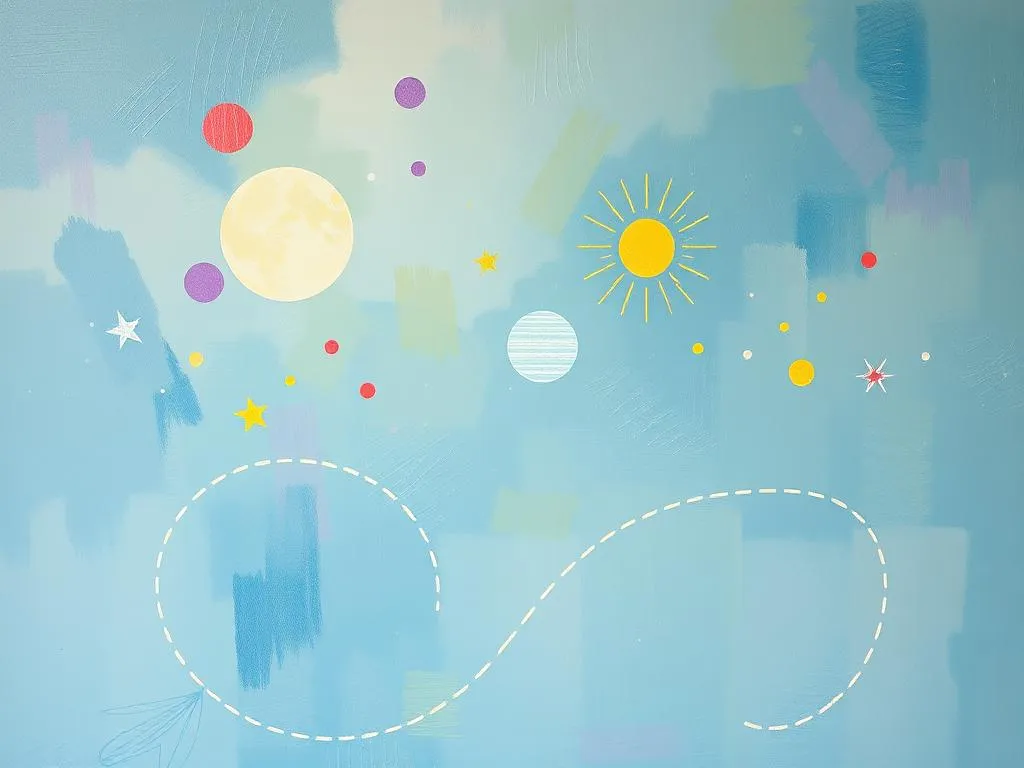
Introduction
Dreams have long fascinated humanity, offering a glimpse into our subconscious mind and revealing hidden emotions, fears, and desires. Among the myriad ways dreams manifest, the symbolism of positions is particularly intriguing. The way an object, person, or situation is positioned in a dream can significantly alter its meaning and impact. Understanding these nuances can provide valuable insights into our waking lives, helping us navigate complex emotions and situations. In this article, we will delve into the symbolism and meaning of different positions in dreams, exploring how they can serve as mirrors reflecting our inner thoughts and feelings.
Symbolism and Meaning
When analyzing the symbolism of positions in dreams, we must consider various elements such as location, orientation, and relationship to other objects or individuals. Each of these factors can carry distinct meanings that vary from person to person, influenced by personal experiences and cultural contexts.
For instance, if you dream of being at the top of a hill or mountain, this often symbolizes achievement and a sense of accomplishment. It may reflect your waking life aspirations, indicating that you are on the right path toward reaching your goals. Conversely, being at the bottom of a hill might represent feelings of being overwhelmed or struggling to rise above challenges. This position can evoke a sense of helplessness or stagnation, suggesting that you may need to evaluate your current situation and seek ways to gain perspective.
The orientation of objects also plays a crucial role in dream interpretation. For example, if you dream of a clock that is stuck at a specific time, the position of the hands can indicate your perception of time in your waking life. A clock stuck at midnight might symbolize feelings of being trapped or stuck in a particular phase, while a clock showing 12:00 PM could suggest a time of productivity and activity. The positioning of such symbols can lead to deeper reflections about your relationship with time, deadlines, and priorities.
Moreover, the relationship of one dream element to another can significantly alter its interpretation. In dreams where you see a loved one in distress, the position they are in—such as lying down versus standing up—can indicate different emotional states. A loved one lying down might suggest vulnerability or a need for support, whereas one standing tall could signify strength but perhaps also a sense of distance or detachment. Understanding the dynamics of these positions can help you navigate your feelings towards that person in your waking life.
Positions can also reflect power dynamics in relationships. For example, dreaming of being below someone in a hierarchical structure, like an office setting, may symbolize feelings of subordination or a lack of control. Conversely, dreaming of being above someone else can reflect confidence and authority, but it might also indicate a need to be cautious about how you wield that power.
Key Scenarios and Variations
The various scenarios in which different positions are featured in dreams can lead to unique interpretations. Consider a dream where you find yourself floating above a city. This position often symbolizes a sense of freedom, a desire for escape, or a broader perspective on your life situation. Floating or flying dreams can evoke feelings of euphoria and liberation, suggesting that you may be seeking to rise above your problems or gain a clearer understanding of your life’s direction.
In contrast, dreaming of being buried or trapped in a confined space can elicit feelings of anxiety or suffocation. This position often signifies being overwhelmed by responsibilities or emotions, indicating a need to confront and address those feelings rather than burying them. The sense of being trapped can also reflect relationships or situations that feel restrictive, urging you to find ways to reclaim your autonomy.
Another common scenario involves chasing or being chased in a dream. The position of the pursuer and the pursued can reveal a lot about your emotional state. If you dream of someone chasing you, the position of your body—whether you are running away, hiding, or standing your ground—can symbolize your response to stressors in your life. Running away may suggest avoidance, while standing your ground can signify resilience and readiness to confront challenges.
In dreams about falling, the position of your body at the moment of impact can indicate your feelings about losing control. If you dream of falling and landing softly, it may suggest that you are comfortable with taking risks or embracing change. However, if you experience a harsh landing or wake up just before impact, this could signify fears of failure or anxiety about unforeseen challenges in your waking life.
Additionally, the context of your surroundings can also impact the meaning of positions. For instance, dreaming of being in a crowded place with people surrounding you may symbolize feelings of being overwhelmed by social expectations. If you find yourself isolated or on the periphery of the crowd, it can reflect feelings of loneliness or a desire for connection.
Real-Life Connections and Takeaways
Understanding the symbolism of positions in dreams can offer profound insights into your real-life situations. Reflecting on these dreams can be a powerful tool for self-discovery and emotional healing. Here are some ways to connect dream positions to your waking life:
First, take a moment to journal about your dreams. Write down any specific positions you remember and how they made you feel. This practice can help you uncover patterns or recurring themes that might be influencing your daily life. Are there specific individuals or situations that evoke similar feelings? Identifying these connections can lead to a deeper understanding of your emotions and motivations.
Next, consider how the positions in your dreams relate to your waking life challenges. For example, if you frequently dream of being at the bottom of a hill, take a moment to evaluate areas in your life where you feel stuck. Are there obstacles you need to confront? Reflecting on this can encourage you to take proactive steps toward overcoming challenges rather than feeling overwhelmed by them.
Additionally, use your dreams as a guide to assess your relationships. If you dream of someone in a position of power over you, consider how that dynamic plays out in your waking life. Are you comfortable with the balance of power in your relationships? Are there boundaries that need to be established? Engaging with these questions can help you foster healthier connections with others.
Finally, embrace the opportunity for growth that comes with exploring your dreams. Different positions in dreams can highlight areas where you may need to assert yourself, seek change, or practice self-care. If you find yourself frequently dreaming of being trapped or confined, it may be time to explore ways to liberate yourself from those feelings—whether it’s by setting new goals, seeking support, or practicing mindfulness techniques.
In conclusion, dreams are a rich tapestry of symbols and meanings, and the positions of these symbols can profoundly influence their interpretation. By reflecting on the significance of different positions in your dreams and connecting them to your waking life, you can gain valuable insights into your emotions, relationships, and aspirations. As you continue to explore your dreams, remember that they are not just random occurrences but powerful reflections of your inner world. Embrace the journey of self-discovery and allow your dreams to guide you toward a deeper understanding of yourself.







